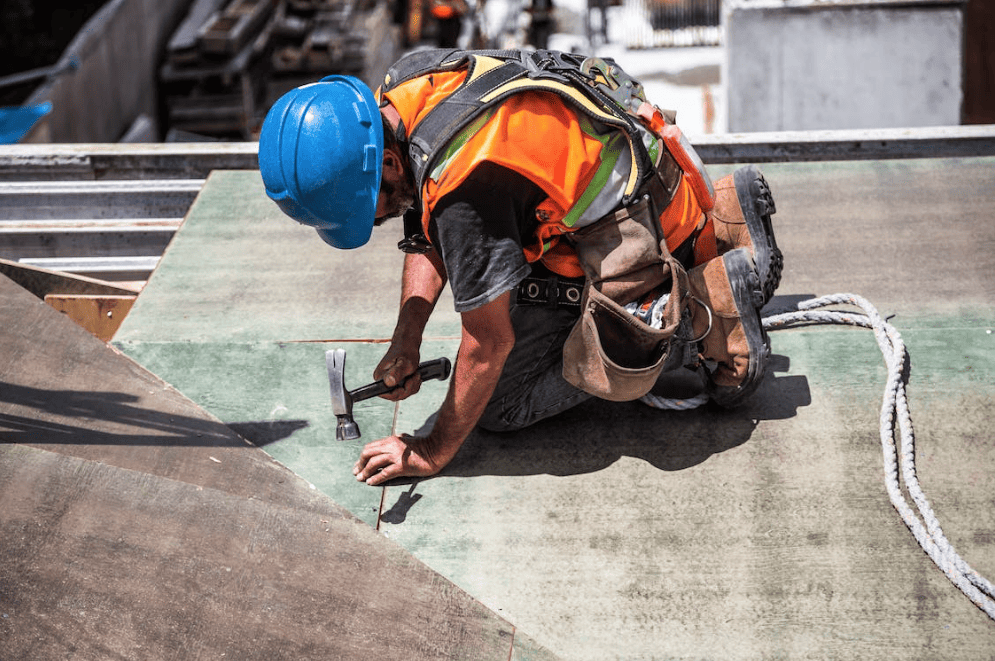Working at heights in the construction industry can be highly hazardous, as it increases the risk of significant injuries and fatal accidents. By understanding the risks and taking steps to avoid them, these dangers can be minimised and safer working conditions can be achieved.
What constitutes “Working at Heights” and why do I need training?
Working at heights is a high risk work activity, and could mean working as high up as a multi-storey building, or as low down as the second rung of a ladder.
In fact, most fatal and serious falls occur from a height of four metres or less.
The minimum requirements for working at heights are set out in the Work Health and Safety Regulation 2011 (the WHS Regulation). The WHS Regulation sets out the specific control measures that are required where there is a risk of a fall of at least: 3 metres in housing construction work; or 2 metres in other construction work.
Know the Regulations Applicable To You.
Employer
WHS Act section 19 – Primary duty of care
“A PCBU (person conducting a business or undertaking) must eliminate the risk of falls in the workplace, or if that is not reasonably practicable, minimise those risks so far as is reasonably practicable”
WHS Act section 19 – Primary duty of care WHS Regulation 39 Provision of information, training and instruction
“The WHS Act requires PCBUs to ensure, so far as is reasonably practicable, the provision of any information, instruction, training or supervision necessary to protect all persons from risks to their health and safety arising from work carried out as part of the conduct of that business or undertaking.”
WHS Regulation 317 – Duty to ensure worker has been trained
“You must not direct or allow a worker to carry out construction work unless the worker has successfully completed general construction induction training.”
Employee
WHS Act section 28 – Duties of workers
“Workers have a duty to take reasonable care for their own health and safety and to not adversely affect the health and safety of other persons.”
Understand the Hazards Involved.
It is essential that you are aware of any safety procedures and regulations pertaining to working at height, such as wearing protective clothing or being securely tethered. In addition, make sure you have the right equipment and tools for the task and have been appropriately trained on how to use them safely.
SafeWork NSW: “Construction falls from heights” checklist
Work on the ground or on a solid construction
If you don’t have to work at heights, don’t. Working from the ground is always the safest option. Use a mechanical aid such as an MEWP (Mobile Elevated Work Platform)
Use Fall Prevention Systems.
Fall prevention systems are designed to minimise the risk of a fall at height. This can be achieved by installing permanent safety systems such as guard rails and anti-climb fencing, or by using personal fall protection systems such as harnesses, lanyards and scaffolding platforms. It is important to use the right system for each job and make sure it is regularly checked to ensure it is safe for use.
Use a work-positioning
When a fall protection system cannot be used, a work-positioning system is your next best option. A work-positioning system either prevents a worker from reaching a hazard or enables the person to work supported in tension in a way that prevents the person from falling.
Use a fall-arrest system
A fall-arrest system is used when it is not possible to use a fall-prevention device and a work positioning system. A fall-arrest system may not prevent a fall, but it stops a person who has fallen and reduces the impact of the fall, which can reduce injuries. Examples include industrial safety nets, catch platforms, or harness-based fall-arrest harnesses used with lifelines or individual anchors.
Provide Training and Make Regular Safety Checks of All Team Members Working At Heights.
To reduce the dangers of working in heights is to ensure all team members have received the appropriate safety training and understand the steps they need to take in order to stay safe. It’s especially important for personnel that are involved in tasks, such as installing structures, which require them to work at heights, to have experience and the knowledge of all the required safety protocols and processes. Regular equipment checks should also be carried out by supervisors, managers or health and safety officers attending regular site inspections. This will help verify that all employees are properly trained and adhere to all conditions when it comes down to working at heights safely.
Ensure That Equipment Is Properly Maintained and Inspected Daily.
Working at height in the construction industry comes with risk that can be very serious. To minimise the risk of fatal or nonfatal accidents, make sure equipment is properly checked, serviced, and inspected daily to ensure it meets safety regulations. This includes checking that guard rails are properly installed, ladders and scaffolding are adjusted correctly, harnesses are secured correctly and any other protective systems in place are up-to-date. Regular maintenance of equipment will help reduce the risk of a fatal or casualty accident while working in heights.
Additional Related Resources:
COP: Managing Risks of Falls at Workplaces
COP: Managing Risk of Falling in Housing Construction
Minimizing the risk of falls from heights in the construction industry is important for keeping workers safe. Failure to do so can result in severe consequences. This article provides insight into a few methods which can help improve health and safety on a construction site, and thereby minimizing the risk of injuries and fatalities from falls from high locations.
Dedicated to Your Working At Heights Safety
Nigel
